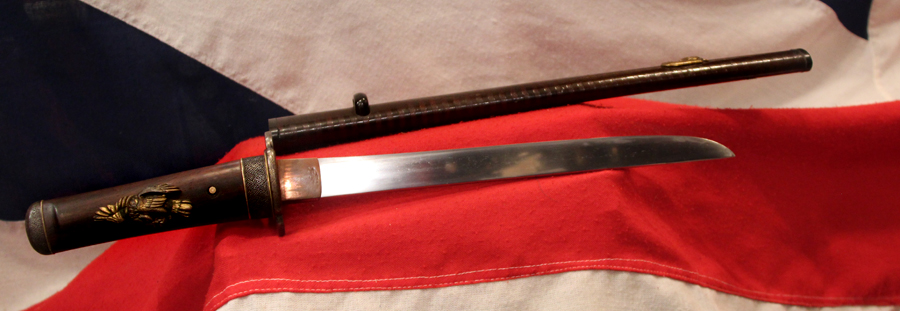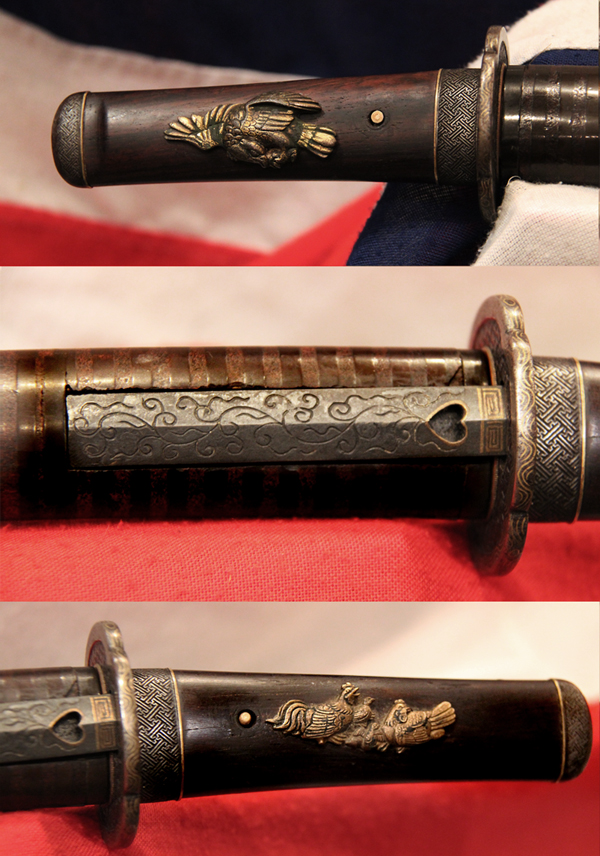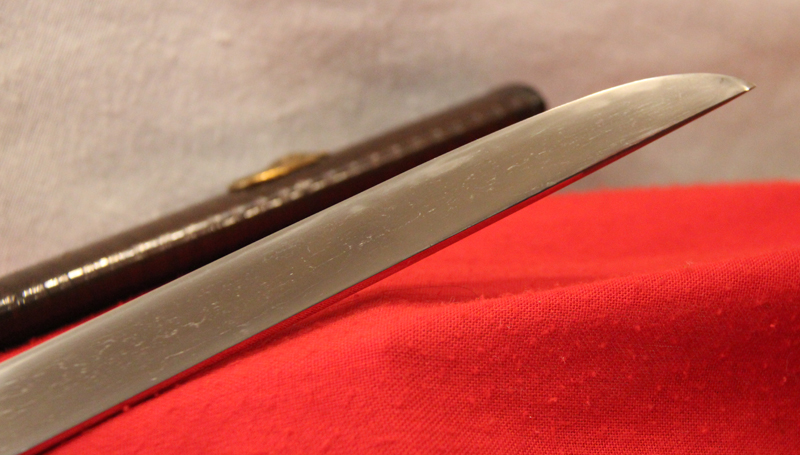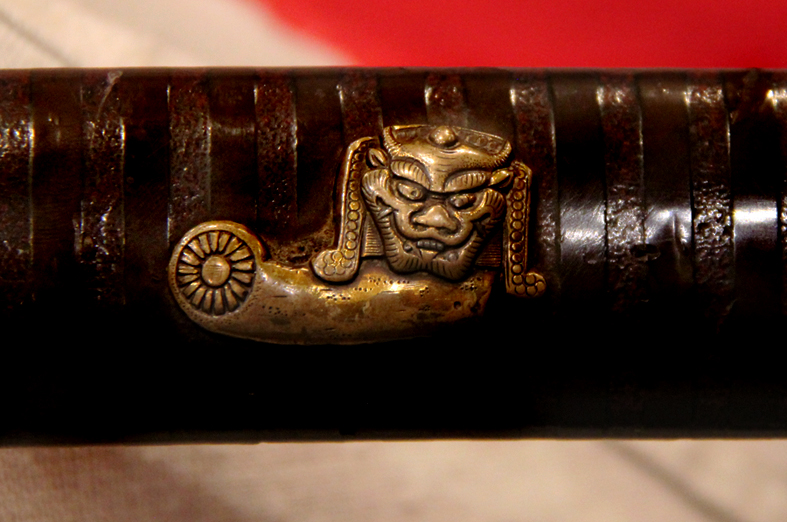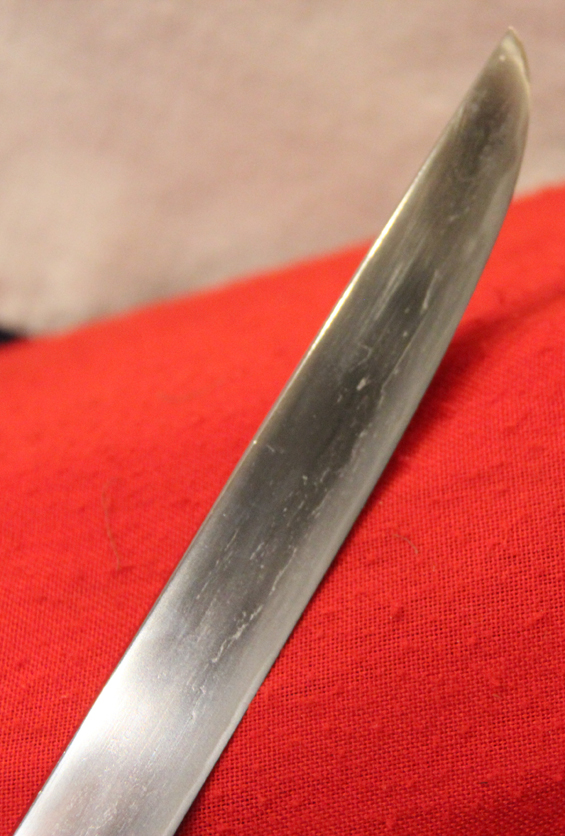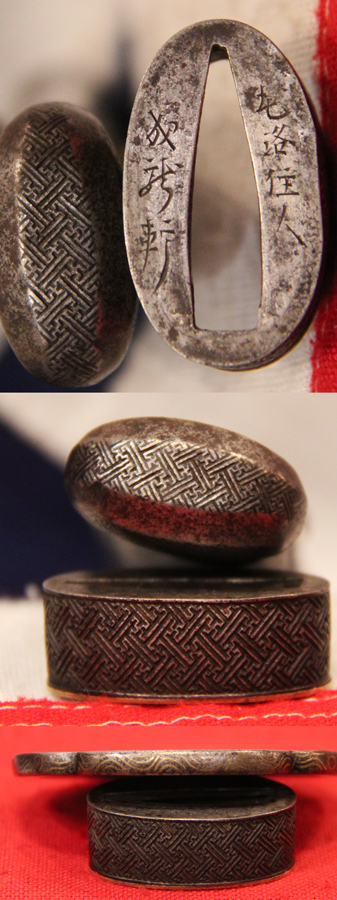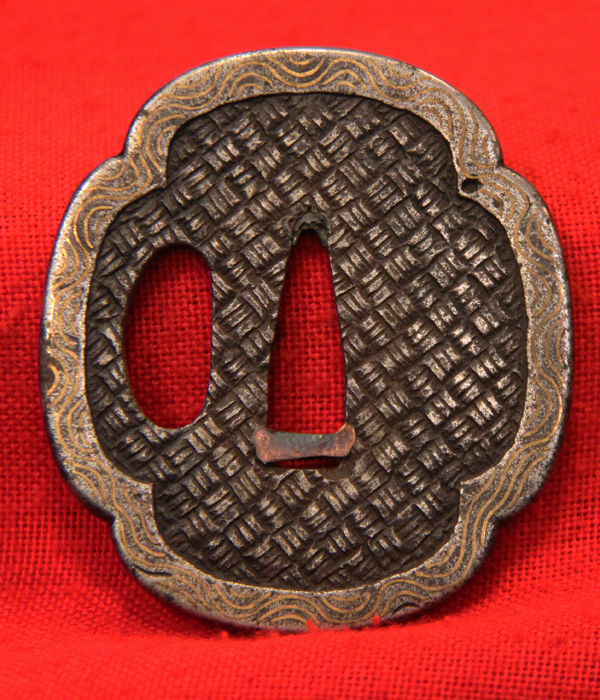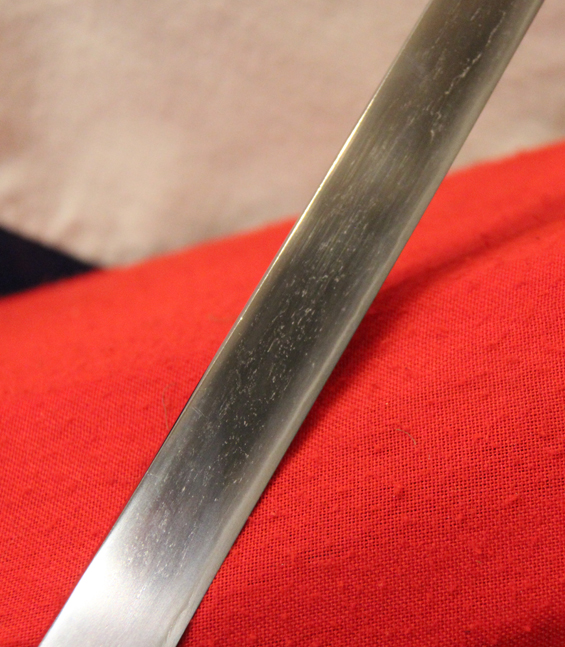Koto Tanto By Masaiye With A Full Matching Suite of Edo Mounts, & a Fabulous Oni Demon Mount on The Saya
Around 500 years old. A stunning tanto with carved steel mounts decorated with geometric Ha-kenkoroitsu pattern, a version of the Hachisuka clan mon, it also has a matching kozuka with gold inlay to match the gold inlay workmanship on the tsuba. Cockeral menuki and a super oni demon mount on the two tone banded lacquer saya. Signed koshirae and blade by Masaiye circa 1530. Although called the manji in Japan symbolising 10,000 years and infinity, and usually used as a Buddhist symbol for temples, this version though is the Ha-kenkoroitsu (from the German word Hakenkreuz, or crooked cross) and it describes it as the 45-degree clockwise manji used by the Nazi party.
Its first recorded occurrence of the swastika named from a sanskirt word dates all the way back the the 6th to 5th millennium BC when it was used in the Vinca script of Neolithic Europe. After that it has been used by primitive society consitently from China to the Americas passing by Greece and Africa. The crooked cross is a historical sacred symbol in all Indian religions. It is used in Hinduism, Buddhism and Jainism. It rose
to importance in Buddhism during the Mauryan
Empire and in Hinduism with the decline of Buddhism in India during the Gupta Empire. It followed the silk road with Buddhism to reach Tibet and China. The symbol was also introduced
to Bali with Hinduism by Hindu kings. The use of the swastika by the Bon faith of Tibet, as well as later religions like Cao Dai of Vietnam and Falun Gong of China, can also be traced to Buddhist influence. The oni is the demon of Japanese folklore. It takes on many other names, sometimes referred to as a devil. Unlike most western cultures, the oni is not necessarily seen as an evil being. It is said to be of a dual nature, meaning it's powers can be good or evil, depending on if it likes the subject it attaches itself too. Oni are credited with bringing good health, safety, peace and avoiding disaster. A typical oni mask has horns, bulging eyes, a sinister looking smile and sharp teeth.
Every single item from The Lanes Armoury is accompanied by our unique Certificate of Authenticity. Part of our continued dedication to maintain the standards forged by us over the past 100 years of our family’s trading, as Britain’s oldest established, and favourite, armoury and gallery
Code: 21724
4750.00 GBP


